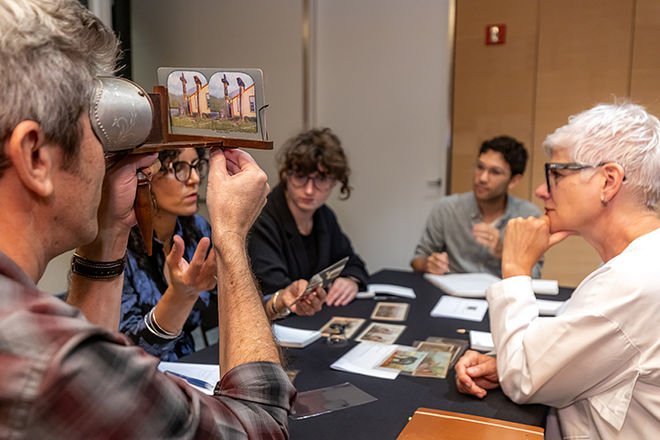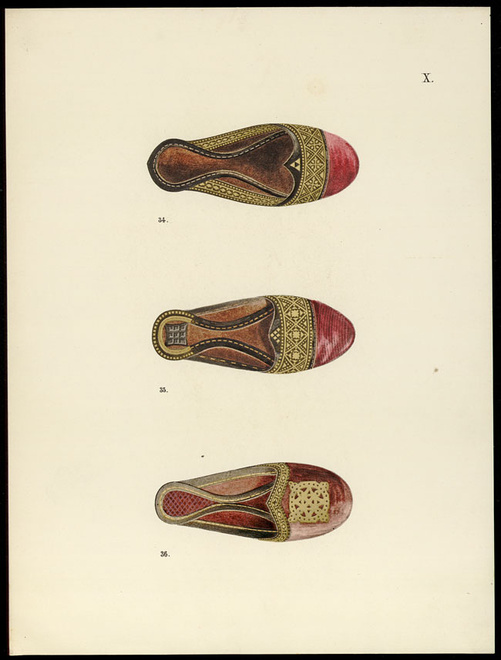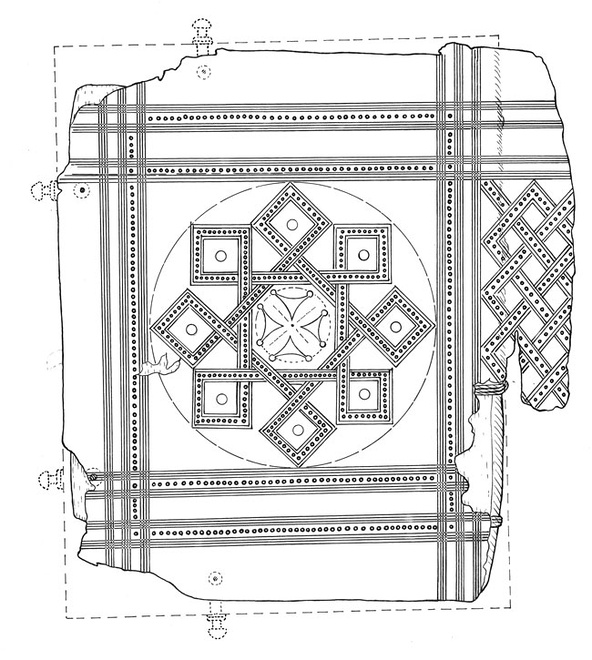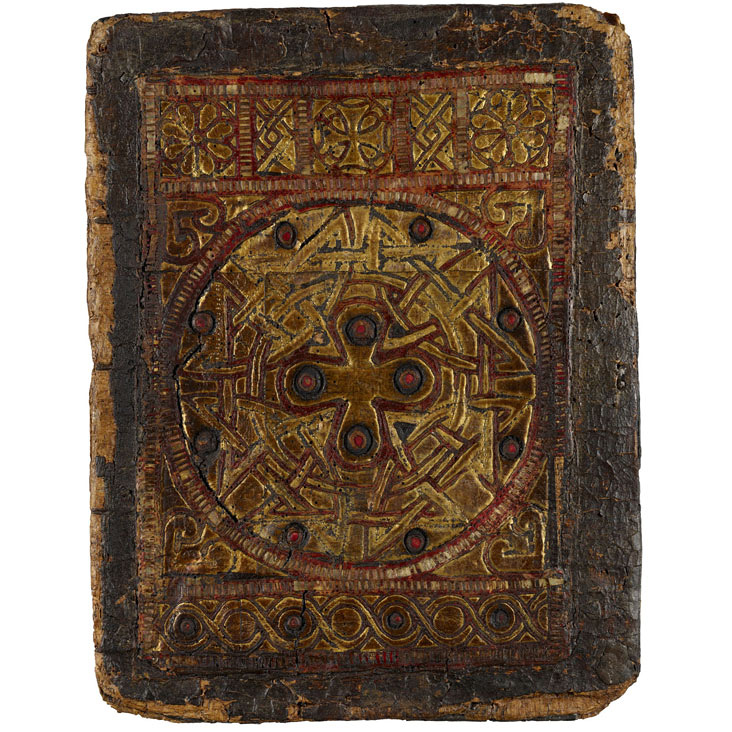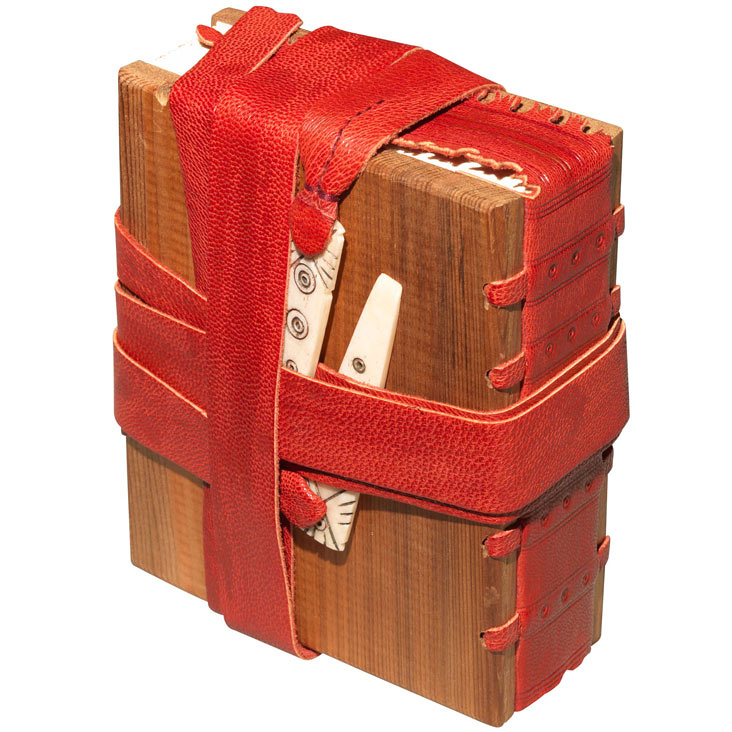From the Exhibition:
The Codex and Crafts of Late Antiquity
What does footwear have to do with Coptic book design?
As it turns out, a lot more than you might think. When I first began working as
Georgios Boudalis’s research assistant for the exhibition The Codex and Crafts in Late Antiquity, I did not expect to be
combing through museum databases in search of hand-woven socks and finely
stitched shoes, yet some of my biggest research breakthroughs came while
analyzing the sewing structure and the gilding pattern seen on antique Coptic
shoes.
The backless shoe, or mule, seen above, one of a pair
in the Metropolitan Museum of Art’s Islamic collection (fig. 1), originated in Panopolis,
Egypt, in the 4th–7th century AD. The
mule’s sumptuous leather may have been a deeper red color at the time it was
made. In any case, it is this red tone that gave our modern-day mule shoes
their name. Mulleus calceus, the
shoes commonly worn by aristocratic Romans, were a color similar to that of red
mullet fish (mullus); scholars
believe that the term mulleus was
shortened over time to produce the word we use today—mules. Many
such shoes were preserved in the desert gravesites of Panapolis, near the
modern Arab city of Akhmim (fig. 2).
The shoes and the covers from bound Coptic manuscripts
featured in the exhibition were fabricated out of similar leathers, but their
connection runs deeper than the color of the leather. The gilded decoration
adorning both the shoe and the manuscript covers and the process of its
application also draw the pieces together. In both examples, gold foil was
adhered to the leather to create a dazzling ornamental pattern.
Although decorative ornament may seem, at first glance,
to serve the sole function of beautifying an object, decoration found on
leatherwork also constitutes a form of language. Embedded in the interlacing
diamonds, crosses, and squares are cultural meanings that are not readily
accessible to the modern viewer. There are different possible explanations as
to why these two disparate forms—shoes and books—possess similar designs. They
might draw from a common pool of decorative patterns reflecting the fashion,
taste, or even symbolic meanings of the era. Unfortunately, owing to scant
written records explaining the reason for commonalities between forms, we will
likely never be able to draw a definitive conclusion.
From a practical standpoint, we must first consider
the artisans who created the works in question. The process of creating
manuscripts was not as streamlined as one might assume, since the task was
assigned not to a single monk in a monastery but to numerous scribes and
manuscript illuminators who wrote and decorated the texts and created the illuminations.
It is also clear from the execution that skilled leather workers fabricated the
decorative covers. Because of technical similarities between the sewing and
gilding of both the shoes and the manuscript covers, as well as their comparable
design schemes, evidence seems to indicate that leather workers worked across
both mediums, creating both sacred and quotidian objects.
The similarities between the shoes and manuscript
covers also extend beyond their technical execution; clearly the style and
possible function of the decoration knit the two forms together. Angular
geometric designs, like those found on the shoes, also serve as a chief
decorative feature of the Morgan Library manuscript M. 574 (fig. 3). Likewise,
we find similar diamond patterns in floor mosaics situated at the entrances of
Coptic and Byzantine churches of the era.
It is difficult to explain the similarities between
the patterns on the shoes and those on the manuscript covers, as we can never
know exactly what the artisans who created them intended. Clearly some of the
patterns found on manuscripts had symbolic meanings, but did these same
meanings extend to shoes? Perhaps the artisans wanted to demonstrate their
artistic virtuosity across a variety of mediums, or perhaps they simply wished to
create a beautiful pair of shoes for a wealthy patron. These unresolvable
questions underscore the difficulties that come with studying objects that date
back over fifteen hundred years.
Darienne Turner received her MA from Bard Graduate
Center in 2017.
